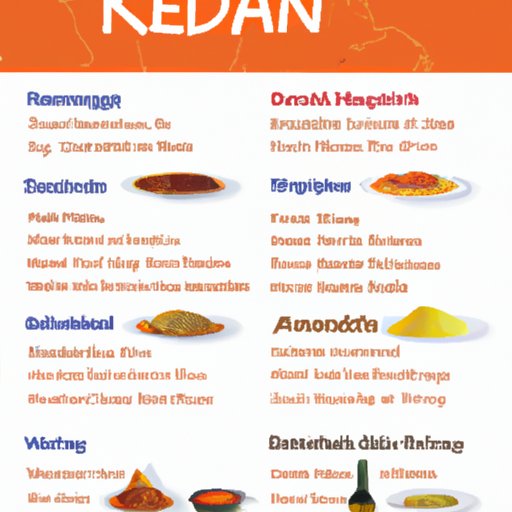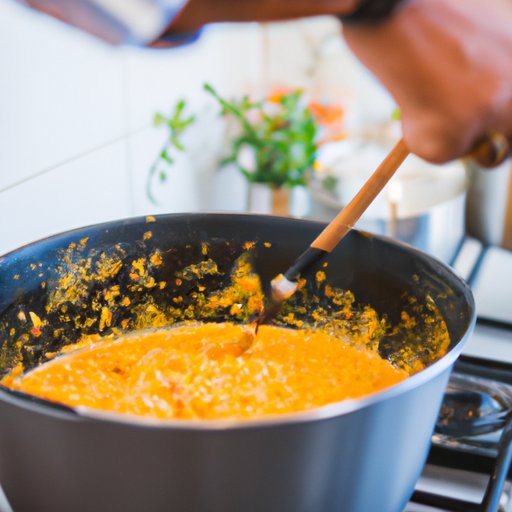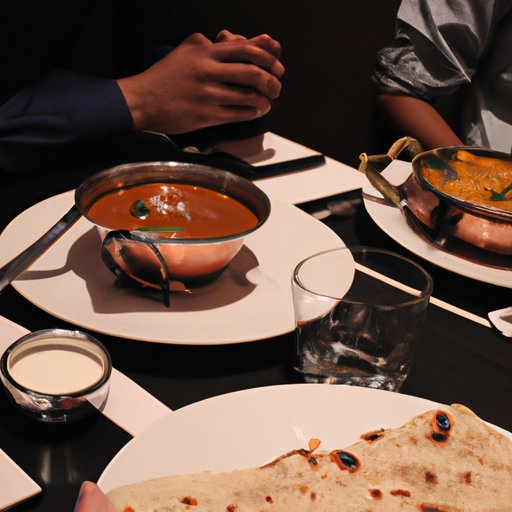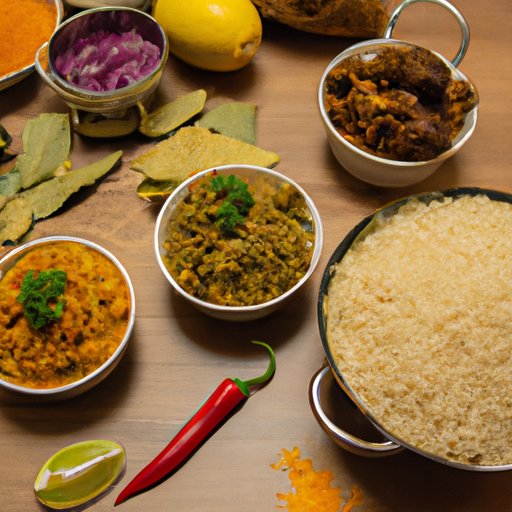Introduction
Indian cuisine is a rich, flavorful, and incredibly diverse type of food that has been celebrated for centuries. From its ancient origins to the modern-day appreciation of its unique flavors, Indian food is a culinary experience unlike any other. In this article, we’ll explore the different types of Indian cuisine, basic tips for eating Indian food, and a guide to some of the most popular dishes.
Exploring the Different Types of Indian Cuisine
Indian cuisine is largely defined by its regional variations. Due to the country’s large size and diverse geography, each region has its own unique style of cooking. For instance, the cuisine in the northern states of India is typically characterized by a greater use of dairy products and wheat-based dishes, while the southern states tend to feature more rice-based dishes and seafood.
Popular dishes like curries, tandoori chicken, and naan are often associated with Indian cuisine, but there are countless other dishes that are just as delicious. Some other popular dishes include biryani (a rice dish cooked with spices and meat or vegetables), samosas (fried pastries filled with potatoes and peas), and dal (a lentil-based dish).
Basic Tips for Eating Indian Food
When it comes to eating Indian food, there are a few things to keep in mind. Utensils and etiquette are important when dining in an Indian restaurant. Most dishes are eaten with your hands, but be sure to use only your right hand as the left hand is considered unclean. If you find that the food is too spicy, try adding some yogurt or raita (a cucumber-yogurt sauce) to help cool it down.
Another thing to keep in mind is that many Indian dishes contain a lot of spices. If you’re not used to spicy foods, it’s best to start off with milder dishes and gradually work your way up. Finally, remember that Indian dishes are meant to be shared. Meals are usually served family-style and it’s customary to share your food with others.

A Guide to Popular Indian Dishes
Curries are one of the most popular Indian dishes. There are dozens of variations of curry, from milder coconut-based curries to fiery vindaloos. Curries are usually made with a mix of spices, herbs, and vegetables, and can be served with rice, bread, or both.
Breads are also a staple of Indian cuisine. Naan, paratha, and roti are all popular flatbreads that are served alongside a variety of dishes. They are usually made with whole wheat flour and baked in a tandoor oven.
Rice dishes are also very common in Indian cuisine. Biryani is a popular dish made with basmati rice, spices, and either vegetables or meat. Pulao is a simpler version of biryani that is made with fewer ingredients and less spices.
Understanding the Spices and Flavors of Indian Cuisine
Spices are essential to Indian cuisine. Common spices used in Indian cooking include cumin, coriander, turmeric, cardamom, mustard seeds, cinnamon, cloves, and ginger. These spices are often combined in various ways to create complex flavor profiles. For example, garam masala is a blend of spices commonly used in Indian cooking that includes cumin, coriander, cardamom, and cinnamon.
Flavor combinations are another important aspect of Indian cuisine. Many dishes are cooked with a combination of spices and herbs to create layers of flavor. For instance, a dish might be cooked with cumin, coriander, garlic, ginger, and chili peppers, which combine to create a unique and flavorful dish.

Cooking Traditional Indian Dishes at Home
Cooking traditional Indian dishes at home can be a fun and rewarding experience. Recipes for Indian dishes can be found online or in cookbooks dedicated to Indian cuisine. When preparing a dish, it’s important to make sure that you have all the necessary ingredients and kitchen tools. Some common ingredients used in Indian cooking include ghee (clarified butter), yogurt, tamarind paste, and coconut milk.
It’s also helpful to have the right kitchen tools. A mortar and pestle are useful for grinding spices, while a wok is great for sautéing vegetables. An electric pressure cooker is also useful for making curries, stews, and dals.

Eating Out at an Indian Restaurant
Eating out at an Indian restaurant can be a great way to experience authentic Indian cuisine. When ordering, it’s helpful to know what dishes are typically served. For example, tandoori chicken is a popular dish that is cooked in a tandoor oven and served with naan bread. Another popular dish is palak paneer, a creamy spinach and cheese dish.
When ordering, it’s also helpful to ask for suggestions from the waiter or chef. They can recommend dishes based on your preferences and spice tolerance. Additionally, it’s important to keep in mind that Indian dishes are meant to be shared. Consider ordering a few dishes to share with your table.
Conclusion
Indian cuisine is a delicious and flavorful type of food that has been celebrated for centuries. This article explored the different types of Indian cuisine, basic tips for eating Indian food, a guide to popular dishes, understanding the spices and flavors of Indian cuisine, cooking traditional dishes at home, and eating out at an Indian restaurant. By following these tips, you can discover the wonderful world of Indian cuisine.
If you’d like to learn more about Indian cuisine, there are plenty of resources available. Cookbooks, online recipes, and cooking classes are all great ways to explore the flavors and dishes of India. With a little bit of knowledge and practice, you can soon become an expert in Indian cooking.
(Note: Is this article not meeting your expectations? Do you have knowledge or insights to share? Unlock new opportunities and expand your reach by joining our authors team. Click Registration to join us and share your expertise with our readers.)
